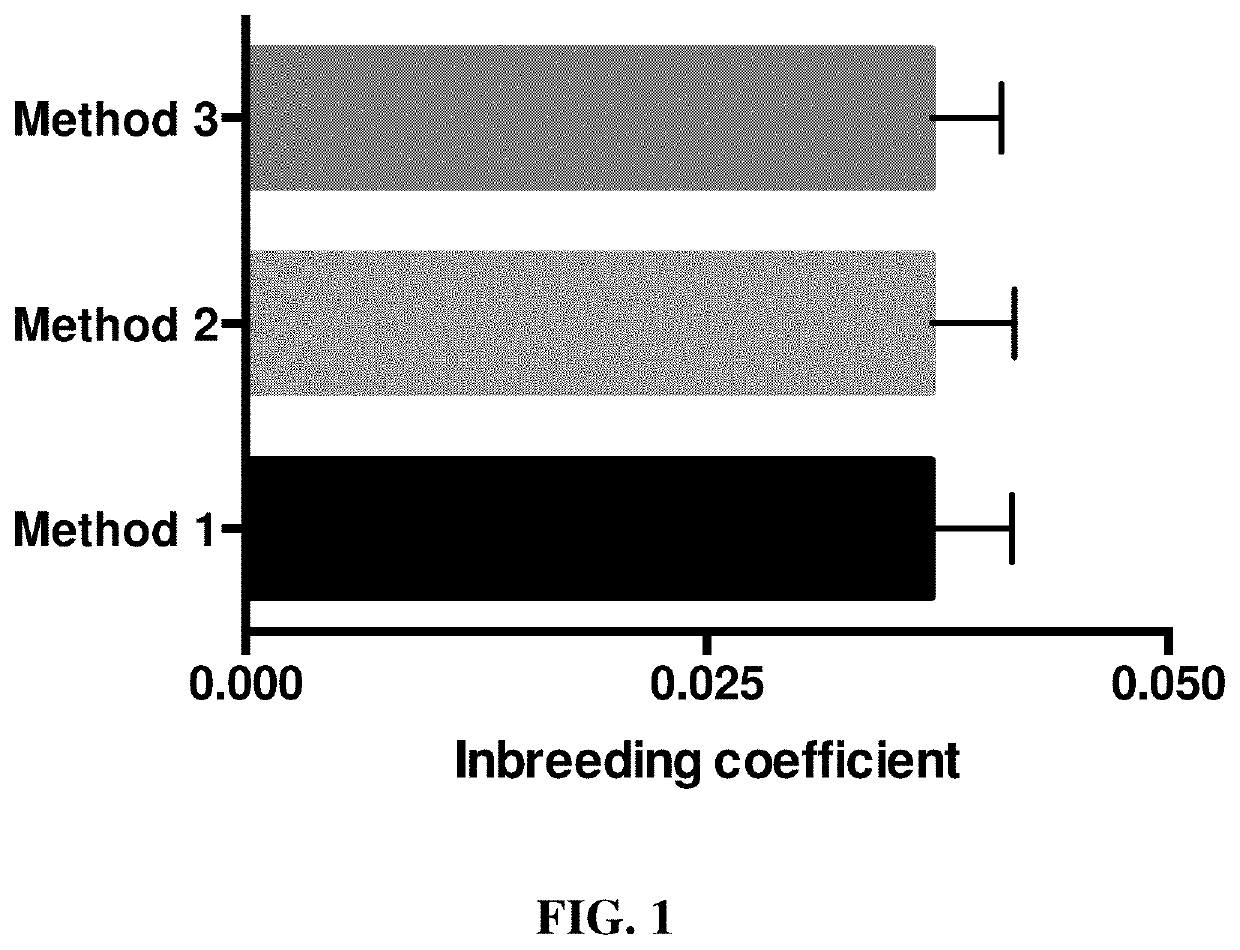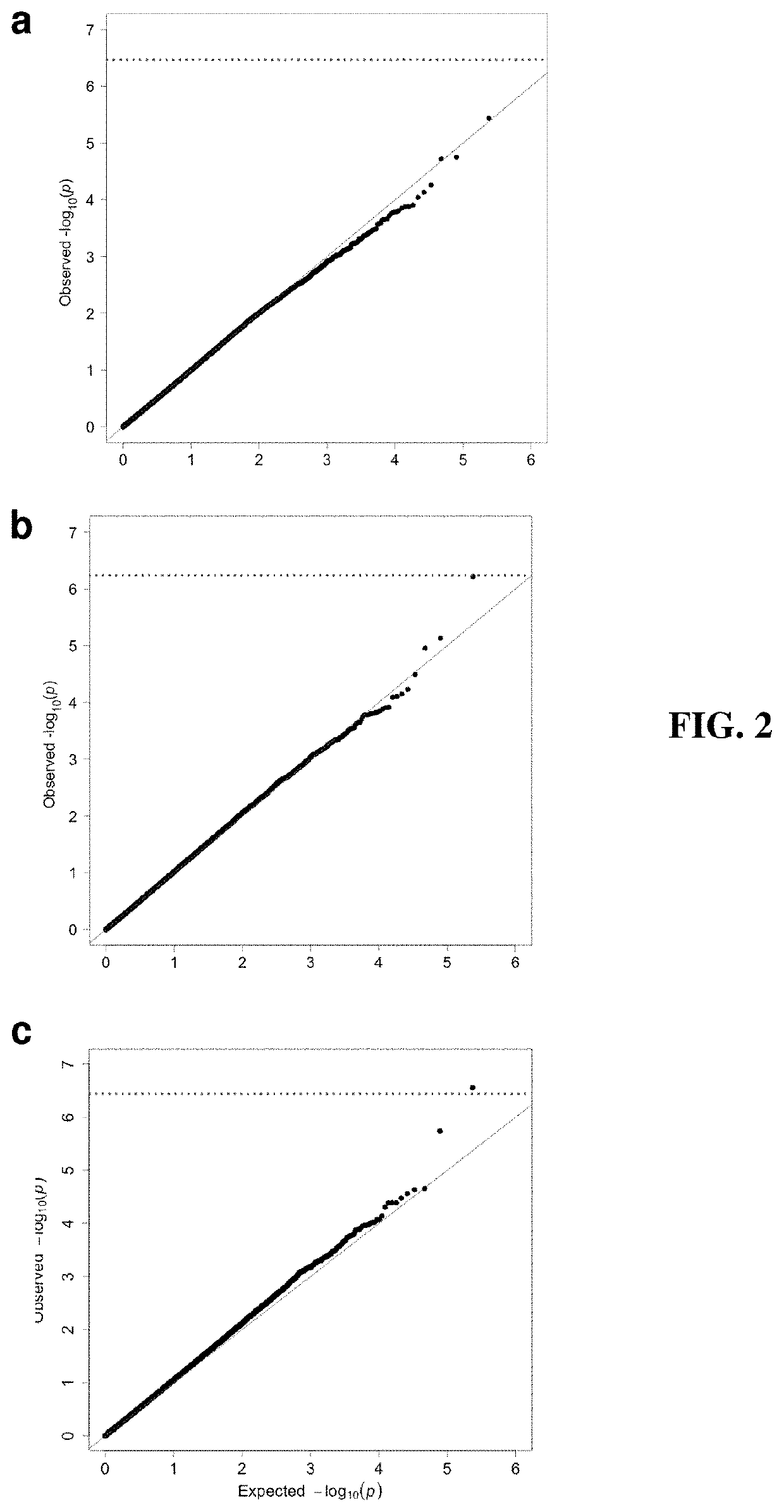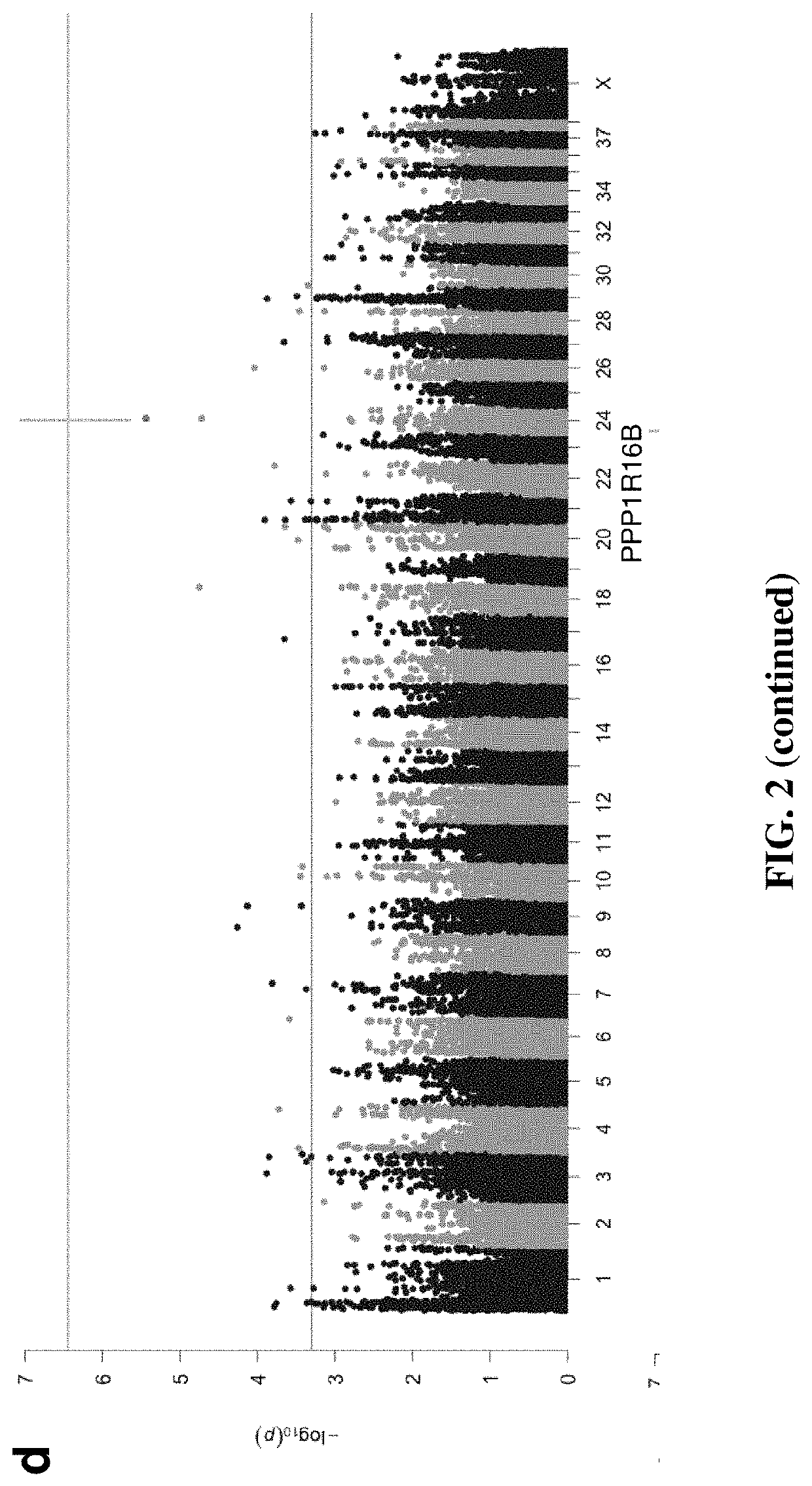Method to predict heritable canine non-contact cruciate ligament rupture
a non-contact cruciate ligament and heritable canine technology, applied in the field of heritable canine non-contact cruciate ligament rupture prediction, can solve the problems of increasing the incidence of disease states within certain breeds, requiring surgical treatment, and instability of the stifle joint as a result of cclr, and achieves the effect of high prevalence and advanced understanding
- Summary
- Abstract
- Description
- Claims
- Application Information
AI Technical Summary
Benefits of technology
Problems solved by technology
Method used
Image
Examples
Embodiment Construction
Abbreviations and Definitions
[0020]CCLR: cranial cruciate ligament rupture (non-contact).
[0021]EDTA: Ethylenediaminetetraacetic acid.
[0022]GEMMA: Genome-wide efficient mixed model association.
[0023]GenABEL is an online project is to provide a free framework for collaborative, robust, transparent, and open source-based development of statistical genomics methodology. See http: / / www.genabel.org / .
[0024]GRAMMAR-Gamma is a genomic analysis program which is available through GenABEL. See also Svishcheva, G. R., Axenovich, T. I., Belonogova, N. M., van Duijn, C. M., and Aulchenko, Y. S. (2012) “Rapid variance components-based method for whole-genome association analysis,”Nature Genetics 44:1166-1170.
[0025]GWAS: Genome-wide association study. A genome-wide association study is an analysis of genetic variation at specified loci in different individuals to see if any variant(s) is (are) associated with a phenotypic trait. As the name indicates, genetic markers across the complete genome of ea...
PUM
| Property | Measurement | Unit |
|---|---|---|
| width | aaaaa | aaaaa |
| physical | aaaaa | aaaaa |
| traumatic force | aaaaa | aaaaa |
Abstract
Description
Claims
Application Information
 Login to View More
Login to View More - R&D
- Intellectual Property
- Life Sciences
- Materials
- Tech Scout
- Unparalleled Data Quality
- Higher Quality Content
- 60% Fewer Hallucinations
Browse by: Latest US Patents, China's latest patents, Technical Efficacy Thesaurus, Application Domain, Technology Topic, Popular Technical Reports.
© 2025 PatSnap. All rights reserved.Legal|Privacy policy|Modern Slavery Act Transparency Statement|Sitemap|About US| Contact US: help@patsnap.com



